
A pre-trip timeline is your go-to plan for organizing everything before you leave for Italy. It keeps you on track so you can relax, knowing every detail is handled. By following this Italy travel checklist, you’ll ensure a smooth and stress-free journey.
1. Gather Your Tools
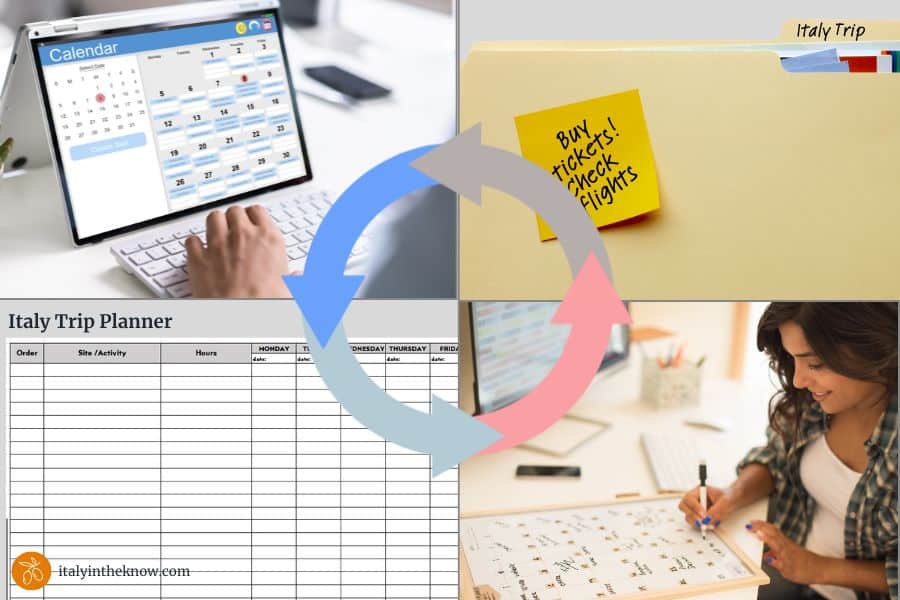
Start by choosing a calendar or planner to track deadlines and tasks. You can use a physical planner, a digital calendar, or a simple checklist, whatever works best for you.
The easiest approach is to add tasks to your existing calendar, so they’re seamlessly integrated with your other to-do items.
Also, create an Italy trip folder to keep everything together in one place. This can be online, a hardcopy folder, or both. You’ll use this alongside the Italy Trip Planner you created in Step 2 to stay organized.
2. Check Your Passport Requirements
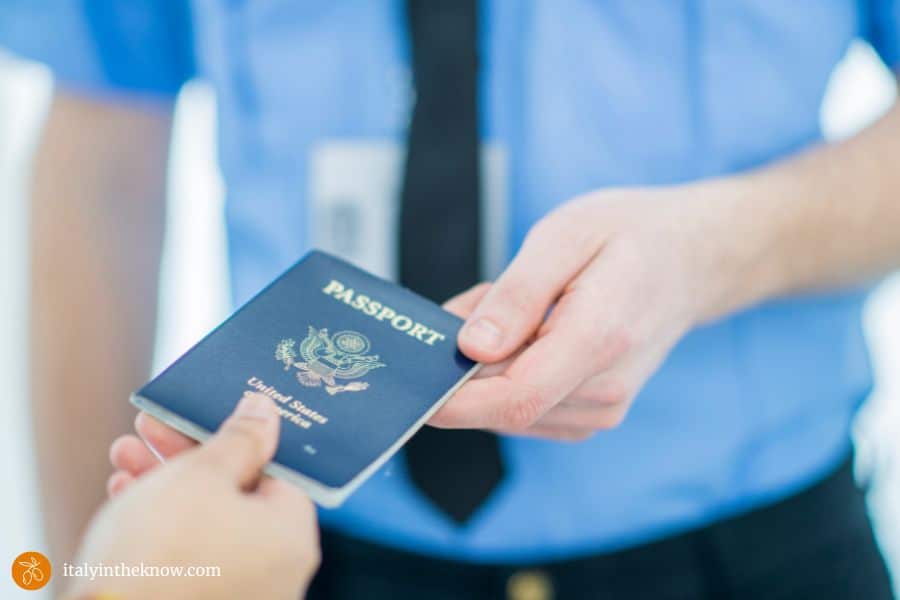
Your passport is the most important document for international travel, especially when visiting Italy. Without a valid passport, your trip could be delayed or canceled.
- Apply or Renew: If you don’t have a passport, apply for one as soon as possible. If you already have a passport, check its expiration date. Italy requires that your passport be valid for at least three months beyond your planned stay, and it must have at least two blank pages for stamps.
- Renewal Tip: If your passport is about to expire, renew it well in advance. You can renew by mail if your passport is still in good condition. Start the renewal process early to avoid delays before your trip.
For U.S. citizens, visit the official U.S. State Department website for up-to-date information on how to apply for or renew a passport. If you’re a citizen of another country, search online for your official government site to find the latest instructions for passport applications and renewals.
Additionally, depending on your nationality and the length of your stay, you may need to apply for a visa to travel to Italy. To find out if a visa is required for your trip, visit the Italy Visa Information page. This official resource provides detailed, up-to-date information based on your citizenship and travel plans, helping you ensure you have the necessary documentation before you go.
Ensuring your passport meets Italy’s entry requirements and knowing whether you need a visa are crucial for a smooth travel experience. Taking care of this early allows you to focus on planning your dream trip to Italy with peace of mind!
3. Getting to Italy: How to Find the Best Flights
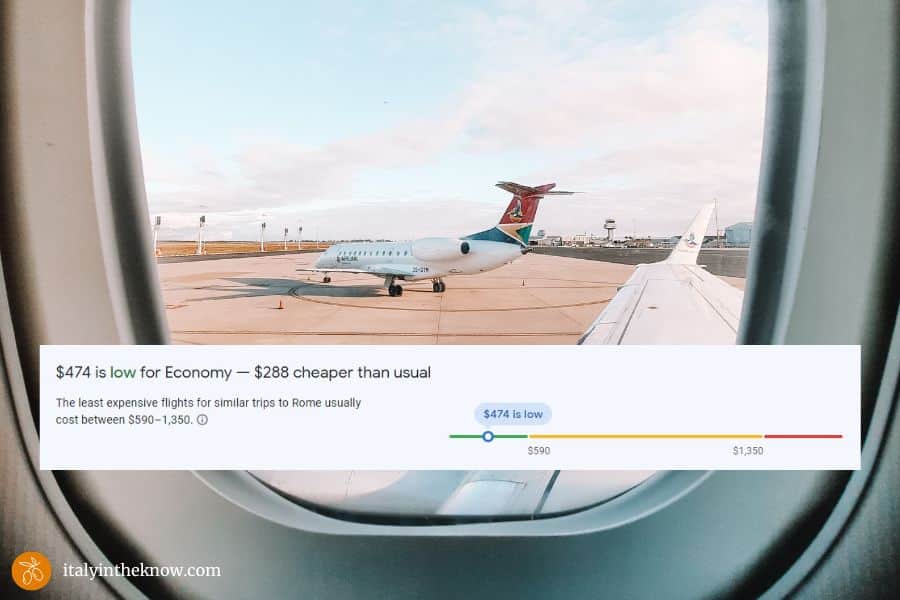
Though trains, cruises, and driving from neighboring countries are options, flying is by far the most popular choice. It offers great flexibility with numerous routes, pricing, and destination options.
To make your journey smoother and more affordable, here’s how to find the best fares and most convenient routes:
Find the Best Flight Deals Using Google Flights
Discover expert search strategies to find the best fares and routes in Mastering Google Flights: Your Ultimate Guide to Savings. Inside the guide, you’ll learn how to:
- Set Price Alerts: Get notified when fares drop so you can book at the right time. If you don’t buy right away, it’s crucial to set up these tracking features. This way, you’ll never miss a chance to get a great deal.
- Book Early for the Best Deals: The lowest fares are often available 3–6 months in advance, or even earlier for peak seasons.
- Consider Alternative Airports: Flying into a nearby airport can save money, and Italy’s high-speed trains make reaching your final destination easy.
Plan Your Flight Route Strategically
- Take a Night Flight to Reduce Jet Lag – Flying west to east overnight allows you to arrive in Italy in the morning, giving your body a chance to adjust more naturally.
- Choose Nonstop or Shorter Layovers – Direct flights cost more but save time. If you have a layover, opt for shorter connections in well-connected hubs.
- Fly Into One City and Depart from Another – Arriving in one city and leaving from another (e.g., flying into Rome and out of Venice) can save time and eliminate the need for a return trip.
- Know the Best Time to Fly – Midweek flights (Tuesdays and Wednesdays) often have lower fares than weekend departures.
With the right planning, you can find affordable flights that match your itinerary, giving you more time to enjoy Italy.
4. Book Tickets for Iconic Sites in Italy

An important yet often overlooked item to include on your Italy travel checklist is securing tickets for key sites. Some of Italy’s must-see attractions—like the Vatican Museums, Colosseum, and Uffizi Gallery—draw huge crowds daily. Booking tickets online saves time, guarantees entry, and lets you choose your ideal time slot.
Personally, I book as many tickets in advance as possible, unless I’m confident I can walk up and buy them with no wait. While there’s often a small processing fee, the time saved, and peace of mind are well worth it.
Here’s how to stay organized and book tickets like a pro:
- Review Your Itinerary – Go through your Italy Trip Planner and identify priority sites. Mark these in Column L with a “P” so you know they need advance booking.
- Purchase Tickets in Advance – Set aside time to buy tickets online. Once purchased, mark them as “complete” in your Trip Planner. This way, you always know what’s handled and what’s still pending.
- Store Your Tickets Securely – Print a copy for your Italy trip folder, save a digital version, or do both. I also take a screenshot photo of each ticket and store them in a dedicated photo album on my phone—super handy for quick access at entrances.
- Plan Ahead for Hard-to-Get Tickets – If tickets aren’t available yet, check the release date and set a calendar reminder to book them as soon as they go on sale. Update Column L in your Trip Planner to track the status until it’s marked complete.
5. Planning Transportation Within Italy

Getting around Italy is easy and efficient when you plan ahead. Whether you’re traveling between major cities or exploring smaller towns, choosing the right transportation ensures a smoother journey and helps you make the most of your time.
Traveling by Train in Italy
Trains are the best way to travel between Italy’s cities, offering speed, affordability, and comfort. Booking in advance allows you to compare options and secure the most convenient departure times, giving you greater flexibility in your itinerary.
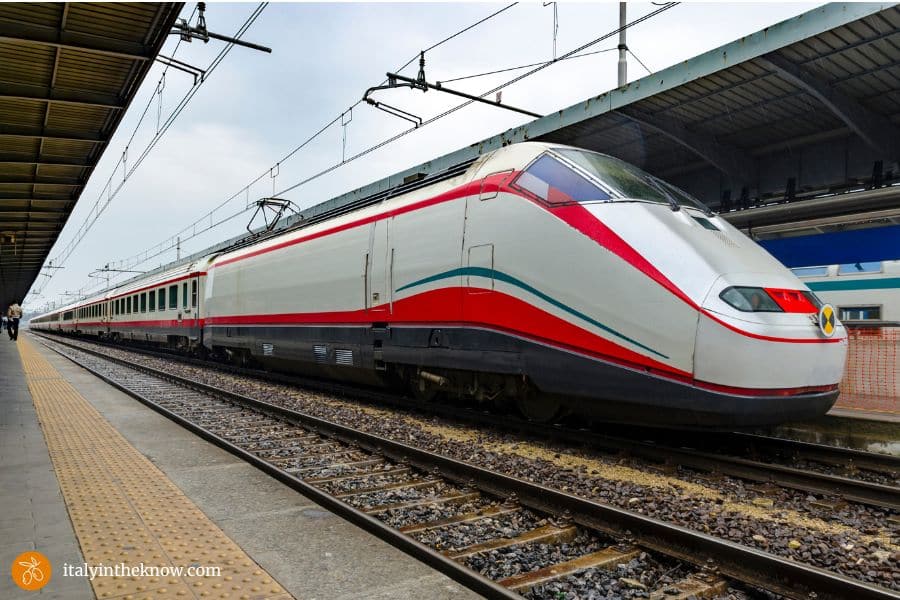
- High-Speed Trains for Fast and Comfortable Travel – Trenitalia’s Frecciarossa and Italo’s high-speed trains connect major cities like Rome, Florence, Venice, and Milan in just a few hours. These trains offer reserved seating, onboard amenities, and a smoother ride compared to regional trains. Booking early often means better prices and more seating choices.
- Regional Trains for Side Trips and Hidden Gems – Italy’s regional train network is ideal for day trips and exploring off-the-beaten-path destinations. These trains are slower but provide access to charming villages and scenic countryside. If you don’t see an online booking option for your destination, try checking another website, as some are more comprehensive than others.
- Compare Schedules and Book Online – Using online platforms allows you to check multiple departure times and choose what works best for your schedule. Here are useful sites for booking trains:
- Trenitalia – Italy’s national rail service, covering high-speed and regional routes.
- Italo – Private high-speed train company with competitive fares.
- Trainline – A user-friendly platform to compare and book tickets across multiple providers.
- Omio – Another option for searching and booking train travel in Italy.
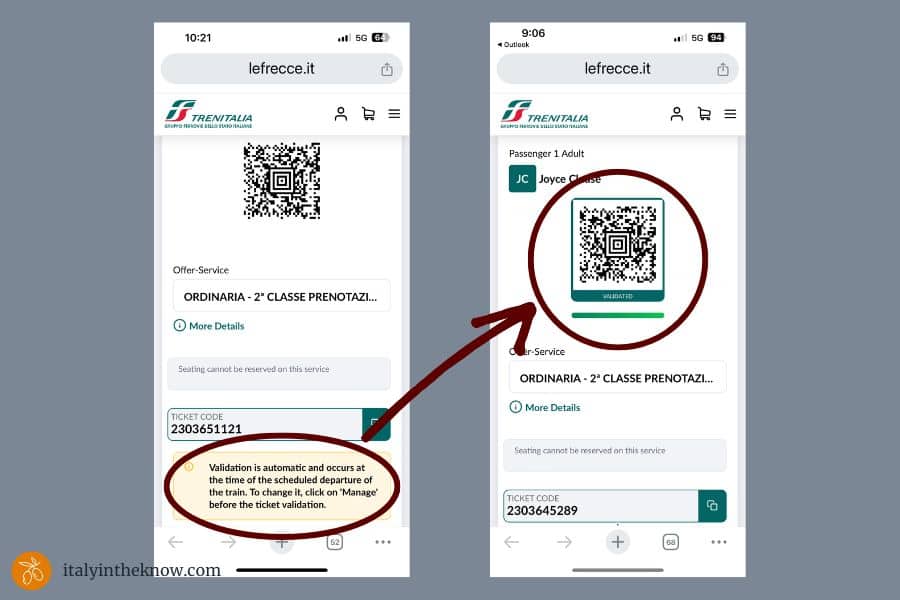
- Validate Paper Tickets Before Boarding – If you purchase a ticket at the station, make sure to validate it at the machines near the station entrances to avoid fines. Some online tickets include automatic validation. A notice will appear on your screen once you board. This lets you know the ticket has been validated.
- Choose the Correct Train Station – Many cities have multiple train stations. When booking, select the main station to ensure a central arrival:
- Rome: Roma Termini
- Florence: Firenze Santa Maria Novella
- Venice: Venezia Santa Lucia
- Keep Your Ticket and ID Accessible – Conductors frequently check tickets, and police may request identification. Having your passport handy ensures a hassle-free trip.
Renting a Car in Italy
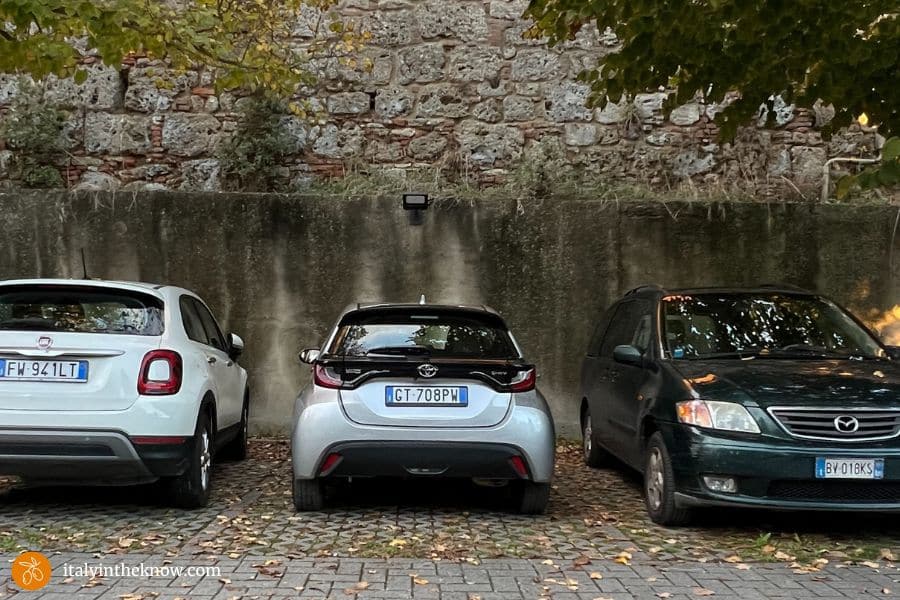
For destinations beyond the rail network, renting a car gives you the freedom to explore at your own pace. However, driving in major cities can be challenging due to restricted traffic zones.
- Book Early and Sign Up for Discounts – Joining rental company mailing lists can help you access exclusive deals and savings.

- Watch for ZTL Zones – Many historic city centers have restricted traffic areas (ZTLs) where unauthorized vehicles are fined. Research local rules before driving into urban areas.
- Plan Where to Park Before You Go – Most historic towns have designated parking areas on the outskirts, making it easier to explore on foot. Look up parking locations in advance and input them into your GPS for a hassle-free arrival.
- Prepare for Tolls – Italy’s highways have toll roads, so carry a credit card or cash for payments.
Using Public Transportation in Italy
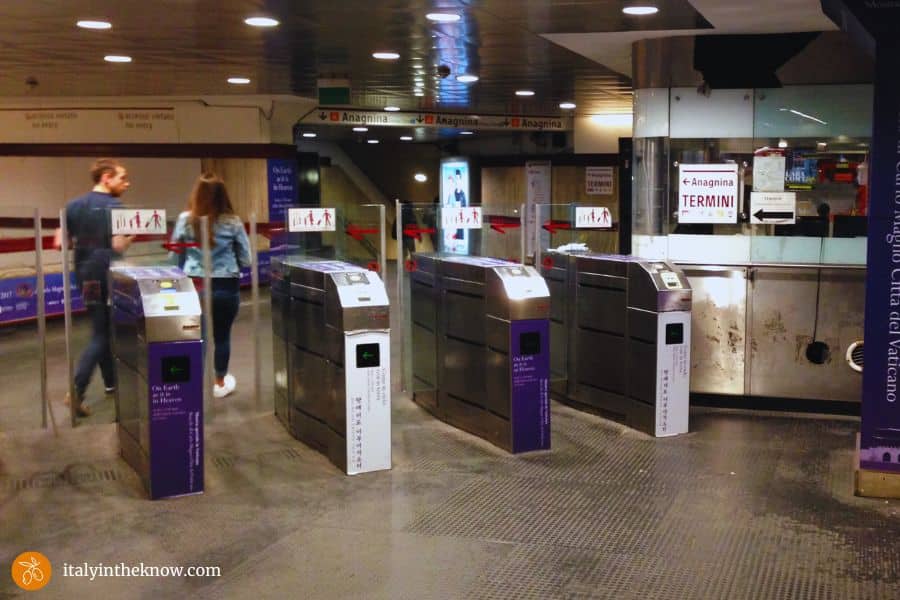
Buses, trams, and metro systems make it easy to navigate cities and smaller towns.
- Check Schedules in Advance – Public transit frequency varies by location, and service may be limited at night or in smaller towns.
- Buy and Validate Tickets Before Boarding – Tickets are sold at kiosks, tobacco shops, and online apps. Always validate them before use to avoid fines.
Planning your transportation ahead of time gives you more flexibility and ensures a stress-free experience while exploring Italy. Whether you take a high-speed train for efficiency, a regional train for a scenic side trip, or rent a car for the countryside, knowing your options makes your journey more enjoyable.
6. Choose the Right Travel Insurance
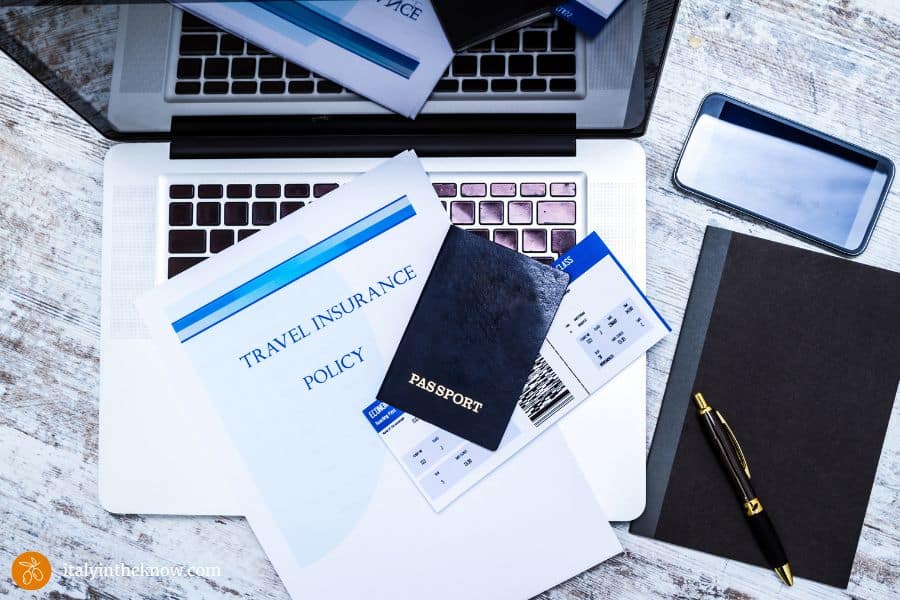
Travel insurance is crucial for protecting you and your family from unexpected events like trip cancellations and medical emergencies. It helps prevent financial loss and gives you options if something goes wrong. With travel insurance, you can have peace of mind knowing you’re covered in an emergency.
When planning your trip, travel insurance is a key decision that helps manage potential risks. The right policy will depend on your individual needs. Consider the following types of travel insurance based on what best fits your situation:
- Trip Cancellation: Covers non-refundable expenses if you have to cancel your trip.
- Medical Emergencies: Provides coverage for medical expenses if you get sick or injured while traveling.
- Emergency Evacuation: Pays for transport to a medical facility if you’re seriously injured or ill.
- Lost Luggage/Delay: Reimburses you for lost baggage or trip delays.
- Travel Assistance: Offers 24/7 support for emergencies during your trip.
It’s important to choose what best fits your needs. Factors such as your health, destination, and trip type should guide your decision.
To make it easier, I’ve created How to Quickly and Easily Choose Travel Insurance. This guide helps you quickly figure out which coverage you need, what information to have ready for quotes, and how to compare policies to find the best fit for your situation. Don’t skip this step—travel insurance provides crucial coverage and peace of mind for your trip.
Final Thoughts

By following your Italy travel checklist, you’ll have everything organized before you go. That way, you can fully enjoy every moment of your Italian adventure—no last-minute scrambling required. Take a little time now to plan, and your future self will thank you!

Not sure where to start? Take the Italy My Way quiz! Discover destinations that match your interests and get a list of the perfect spots for your dream trip today.
Click below to start your free quiz now!

Italy Travel Shop
Enjoy and discover Italy like never before! Browse travel essentials, indulgent treats, and unique Italian treasures that help you live la dolce vita and keep Italy with you always.
